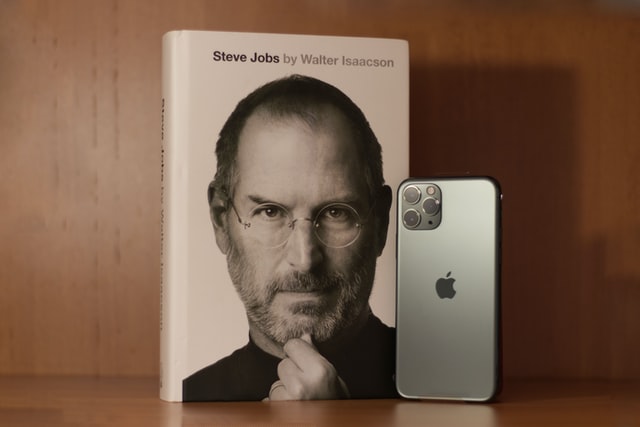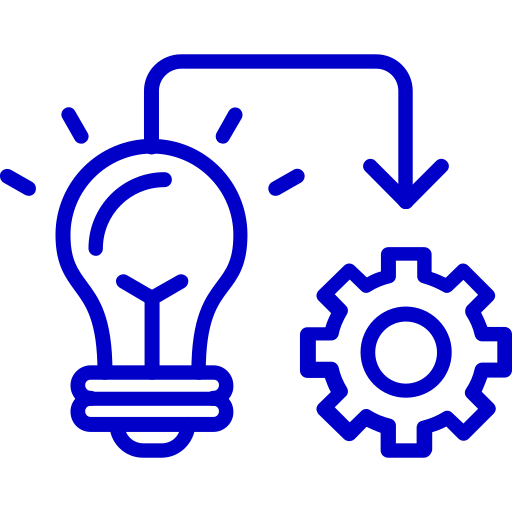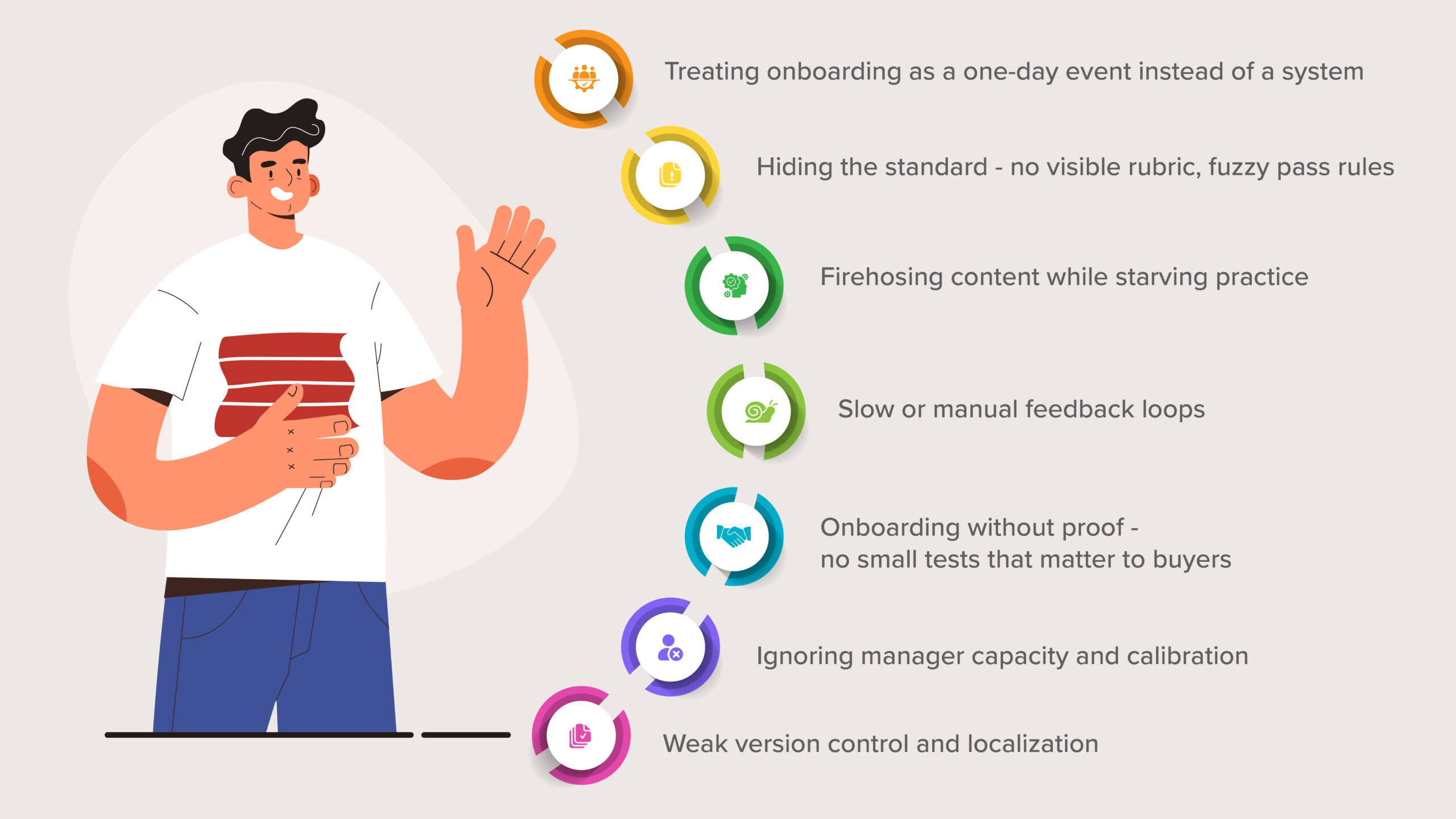7 Sales Presentation Lessons that you can learn from Steve Jobs

- Present your brand at an industry event or conference or exhibition
- Or present your products before the stakeholders of your company or client’s company
- Or launch and introduce a new product to the world
- Capture your audience’s attention
- Take them through a pleasant ride of storytelling
- And keep them engaged from the beginning to the end of your presentation
If you search on Youtube and watch Steve Jobs’s presentation video to introduce the iPhone 4 then you will be impressed by how he wrapped it all in the form of a short, solid, and clear presentation while still gaining curiosity from entire audiences.
This keynote presentation of his still continues to attract thousands of views on YouTube and he has profoundly impacted the way leaders around the world communicated (so much so that many people actually started dressing up like him at various major business meetups)
Presentation techniques like this need to be learned carefully by sales professionals in order to win their audiences’ hearts and achieve goals every day. And this requires more than dressing up like Steve Jobs.
Here are some interesting lessons that sales reps can learn from Steve Jobs and adapt in order to dazzle their audiences with their presentation:
1. Set the Stage Up
A good story in nearly every successful Hollywood movie follows the three-act structure:
- The setup
- The conflict,
- And the resolution
The setup is important. It introduces the characters and provides the background to move the action forward.
In the 2007 iPhone presentation, Jobs built up the narrative in the following way before he even mentioned a new product.
“This is a day I’ve been looking forward to for two and a half years,” Jobs began. “Every once in a while, a revolutionary product comes along that changes everything … Apple has been very fortunate. It’s been able to introduce a few of these into the world. In 1984, we introduced the Macintosh. It didn’t just change Apple; it changed the whole computer industry. In 2001, we introduced the first iPod. It didn’t just change the way we all listen to music; it changed the entire music industry. Well, today, we are introducing three revolutionary products of this class.”
What can you learn from this? Setting up the stage before you begin talking about the main subject of your presentation is extremely crucial. So, make sure that you start your presentation with a strong opening that basically acts as a setup for what you are about to say going forward in the presentation.
The setup does not have to take long. Jobs delivered the previous paragraph in less than two minutes. Just make sure that whatever you say in this setup makes your audience enthusiastic and curious about your presentation.
The set-up story can be
- Brand story
- Customer story
- Or a personal one
2. Stick to the rule of “three”
Jobs instinctively understood that the number “3” is one of the most powerful numbers in communication. A list of 3 things is more intriguing than 2 and far easier to remember than 22.
Jobs divided his iPhone presentation into three sections. He spoke about
- The iPod functions of the new iPhone,
- The phone itself,
- And connecting to the Internet
Jobs even had some fun with the number three. He said, “Today we are introducing three revolutionary products. The first is a widescreen iPod with touch controls. The second is a revolutionary mobile phone. And the third is a breakthrough Internet communications device.”
And then as the audience applauded, Jobs repeated the three ‘products’ several times. Finally, he said, “Are you getting it? These are not three separate devices. They are one device and we are calling it iPhone!”
What can you learn from this? In the same way, you can also follow this mantra of
3. For example, you can talk about
- The three distinctly superior features of your product that makes it stand out from your competitors’ products
- Three unique values on which your business operates
- Three important instances when your product proved its worth or potential
This requires a bit of thinking and analyzing for you to come up with three things that define your brand. But trust me, once you nail this your audience are going to love it as they can easily grasp what you are saying with that “three”
3. Introduce a Villain
All great stories have a hero and a villain. Steve Jobs’s presentation was no exception.
In 2007, why did the world need another mobile phone, especially from Apple?
Jobs set up the narrative by introducing a villain. A problem that needs a solution: “Regular cell phones are not so smart and they are not so easy to use. Smartphones are a little smarter, but are harder to use. They are really complicated…we want to make a leapfrog product, way smarter than any mobile device has ever been and super easy to use. This is what iPhone is.”
What can you learn from this? As you can see in the paragraph above, Jobs described the problems with the competitors’ products. He positioned them as villains in the narrative, calling existing smartphones as “the usual suspects.”
This is necessary to do because the customers don’t care about a product or an idea unless it solves a real-world problem. Being aware of this, Jobs never introduced a new product without first describing the conflict– the problem he set out to solve.
So, make sure that you explain the existing villain or the problem that you wish to solve through your product before presenting the solution to your audience
4. Sell benefits, not just information
“It works like magic. You do not need a stylus. It’s far more accurate than any touch display that I’ve ever shipped. It ignores unintended touches. It’s super smart. You can do multi-finger gestures on it. And boy have we patented it. “
The above sentence is expressed by Steve about the greatness of the Apple iPhone. If you explore further, he does not use standard techniques by saying the greatness of the iPhone from A to Z. Instead, he tells only the core benefits that it provides when compared to other mobile phones of that time. These benefits are delivered correctly and answer the existing problems.
What can you learn from this? When you talk about your product, don’t just deliver the general information about the product (which would be publicly available anyway). Before you get into explaining the technicalities of the product, highlight, in a few words, the main unique features of the product which make it stand out from its competition.
5. Avoid Reading from Notes
The introduction of the iPhone lasted about 80 minutes. Not once did Jobs read from a teleprompter or notecards. He had internalized the content so well that he didn’t need notes.
During the demos, however, he did have a very short list of bullet points hidden from the audience’s view. Those bullets served as reminders and they were the only notes he relied upon.
What can you learn from this? In order to demonstrate your dedication and also to sound natural, make sure that you avoid reading from notes. Constantly looking at a piece of paper or a screen doesn’t leave a good impression regarding your presentation.
So, you need to make sure that,
- You make eye contact with your audience while presenting
- Smile at them often
- Crack jokes in between and laugh with them
This engages your audience effectively in your presentation. Of course, you can use bullet points for your reference in order to remember the sequence and flow of your speech but do not look at them too often.
6. Inspire your audience
Jobs liked to end his keynotes with something uplifting and inspiring. At the end of the iPhone presentation, he said, “I didn’t sleep a wink last night. I’ve been so excited about today…There’s an old Wayne Gretzky quote that I love. ‘I skate to where the puck is going to be, not where it has been.’ We’ve always tried to do that at Apple since the very, very beginning. And we always will.”
What can you learn from this? Steve Jobs educated, entertained, informed, and inspired his audiences in every presentation. So can you. It takes work, planning, and creativity, but if someone is willing to listen to your ideas it’s worth the effort to make it great.
7. Have Fun
When Jobs first told the audience that Apple was going to introduce a mobile phone he said, “Here it is.” Instead of showing the iPhone, the slide displayed a photo of an iPod with an old-fashioned rotary dial on it.
The audience got a kick out of it, laughing and clapping. They had been played and Jobs was enjoying their reaction.
There were many funny moments, including a crank call. Jobs was demonstrating the maps feature to show how easy it was to find a location and call the number. He found a Starbucks nearby and called it. A woman picked up the phone and said, “Good morning, Starbucks. How can I help you?” Jobs said, “I’d like to order 4,000 lattes to go, please. No, just kidding. Wrong number. Bye-bye.” The audience loved it.
What can you learn from this? While it may not be appropriate for you to play these kinds of tricks on your audience at all times and situations, it wouldn’t hurt to use some lite humor during your presentation. You must analyze the kind of audience you are presenting to and the kind of environment that you are presenting in and then use the humor wisely.
When both the presenter and the audience can have a laugh and enjoy the presentation, it becomes more effective. Something that would impress your audience very much and have them remember you and your presentation for a very long time.
Want to learn about the top 10 CEOs who started their career as sales reps?Permalink
Read: Top 10 CEOs who started as Sales Reps
Learn about the top women CEOs who are running the top brands in the worldPermalink
Women in Sales Part-2: Top 9 Women CEOs who are leading some of the Top Brands in the world
Related Posts
LMS + Gamification for Enterprise Sales Teams
The 2025 Guide to LMS + Gamification for Enterprise Sales Teams Enterprise sales is a moving target. Messaging changes. Products...
Creating a Safe Learning Environment: AI’s Role in Sales Skill Development
In today's fast-paced sales environment, creating effective training programs that allow sales representatives to develop their skills in a supportive...
How can Trainers Use AI Sales Role plays to Train MRs Better Detailing and Closing Techniques
In general, companies investing in sales training are 57% more effective than those who don’t. Let’s break that down with...
Looking for a sales training software that takes your sales training to a whole new level?
Explore SmartWinnr’s Learning and Gamification features. Learn how to run fun and engaging sales training and sales coaching for your team through SmartWinnr.
Curious to learn more about it? Book a demo today!
 Two way AI Role Plays
Two way AI Role Plays Targeted Learning
Targeted Learning Gamification
Gamification Sales Coaching
Sales Coaching Sales Contest
Sales Contest Implementation
Implementation Consulting
Consulting Enterprise Ready
Enterprise Ready Pharmaceuticals
Pharmaceuticals Medical Devices
Medical Devices Insurance
Insurance Banking
Banking Technology
Technology Senior Living
Senior Living Sales
Sales Call Centers
Call Centers Marketing
Marketing Improve Sales Productivity
Improve Sales Productivity New Hire Onboarding
New Hire Onboarding New Product Launch
New Product Launch Channel Partner Training
Channel Partner Training Sales Events
Sales Events Success Stories
Success Stories Whitepapers and eBooks
Whitepapers and eBooks Contest Template Designer Tool
Contest Template Designer Tool Sales Training
Sales Training Gamification
Gamification All Blogs
All Blogs
